
What are the Fitness tips for women in their 40s ?

Maintaining a fit lifestyle is important at any age, but it's especially crucial as you approach your forties.
Women make up roughly half of the workforce and are more likely than men to take care of elderly relatives.
For a busy woman, working exercise every day can seem like a luxury as well as yet another thing to cross off her already lengthy to-do list.
You don't have to exercise for several hours every day.
It only takes 15 minutes each day to engage in more strenuous activity, such jogging or running, if you have less time.
If you want to experience the benefits of exercise on your heart, it's critical to monitor your intensity.
Without a heart rate monitor, a quick pulse check will tell you how you're doing.
Women in their 40s can benefit from the following fitness advice:
Give strength training top priority:
You naturally begin to lose muscle mass as you get older. Regular strength training workouts can help prevent this loss and preserve muscular mass, power, and general functionality. At least twice a week, perform workouts that work all the major muscle groups.
Include cardiovascular activity:
Cardiovascular exercise is crucial for maintaining a healthy weight and a heart-healthy lifestyle. Aim for at least 150 minutes per week of moderate-intensity exercise or 75 minutes per week of strenuous exercise. Take up exercises like jogging, brisk walking, cycling, swimming, or dancing.
Focus on flexibility and mobility:
Pay attention to your flexibility and mobility because these factors might deteriorate with age and increase your risk of injury. Improve your flexibility, preserve joint mobility, and improve your balance by incorporating stretching exercises and activities like yoga or Pilates.
Be mindful of your eating:
A balanced diet is necessary for general health and fitness. Make an effort to eat nutrient-dense foods, such as lean proteins, whole grains, fruits, vegetables, and healthy fats. Drink enough water throughout the day to stay hydrated.
Prioritize recovery and rest:
Set recovery and rest as a top priority in order to prevent overuse injuries and to give your body time to heal and grow. Make sure to include rest days in your exercise schedule. Sleep enough to assist your general well-being and healing.
Manage your stress:
Prolonged stress can harm your general health and wellbeing. Find stress-reduction methods that are effective for you, such as deep breathing exercises, meditation, or participating in activities you enjoy.
Observe your body:
Pay close attention to how your body feels while exercising and afterward. Modify your actions if you feel pain or discomfort, or get help from a specialist. It's crucial to take care of any underlying health concerns and exercise in a manner suited to your fitness level.
Seek professional advice:
Take into consideration hiring a licensed personal trainer or fitness expert who can create a program of exercises that are relevant to your needs and goals.
There is never a bad time to begin or continue a fitness journey. You may maintain your health and fitness well into your 40s and beyond by being consistent, making good decisions, and choosing activities you enjoy.
Strengthen your muscles.
This can make strength training appear intimidating and dangerous, yet evidence demonstrates that it actually helps women with osteoporosis improve their strength and balance. Pay close attention to your hips and back in particular.
Strength training lowers the risk of cancer and cardiac mortality, according to research. Adults with mild cognitive impairment, aged 55 to 66, may also benefit from it.
Body weight is incredibly powerful and intimidating-less. The dumbbells are used for exercises like rows, chest flies, bicep curls, triceps extensions, etc.
Include weight-bearing exercises:
Weight-bearing exercises should be incorporated because women are more likely to develop osteoporosis as they age. Weight-bearing workouts that promote bone density and lower the risk of osteoporosis include walking, running, dancing, and strength training with weights.
Be mindful of high-impact activities:
Exercise is beneficial, but you should also be aware of high-impact activities because they might place undue strain on your joints. Consider low-impact workouts like swimming, cycling, or using elliptical machines to lessen impact while still getting a solid workout if you have joint problems or a history of injuries.
Exercises to strengthen the core should be done:
For stability, balance, and upholding good posture, core strength is crucial. To strengthen your core, use activities that concentrate on your lower back, hips, and abdominal muscles. Pilates and yoga are very advantageous for
Look for something you enjoy.
Consistency is the most crucial fitness principle. You don't have to exert yourself fully right away (or ever). Enrolling in a marathon might not be the greatest decision for you if you don't enjoy running. Perhaps you like dancing or going for a walk.
However, if you miss a day or two of your diet, that doesn't mean you have to give up and start over the following day. Be kind to yourself and try not to be too hard on yourself.
Include balance and stability exercises
Exercises that improve balance and stability should be included because getting older can make it more likely that we will fall. Include balance-testing exercises in your routine, such single-leg stands, yoga balance postures, or the use of balance boards. This can increase stability and lower the chance of falling.
Stay active throughout the day
Find ways to stay active throughout the day in addition to your scheduled exercise sessions. Take pauses from sitting, go for quick strolls, whenever possible, take the stairs as opposed to the elevator, or perform strenuous household tasks. These little routines can build up and improve your level of fitness overall.
Be consistent and adaptable
Maintaining your fitness in your 40s requires consistency. Set up an exercise routine that works with your lifestyle and stick to it. Be flexible, nevertheless, and prepared to alter your regimen as necessary to meet the demands of your body and any unforeseen changes or difficulties in your life.
Surround yourself with people who will encourage you. To stay motivated and responsible, find a workout partner or enroll in group exercise courses. On your quest to fitness, surrounding oneself with like-minded people can offer support, inspiration, and a sense of community.
It is very crucial to speak with your doctor before beginning any new workout regimen, especially if you have any underlying health issues or worries. Based on your particular requirements and medical history, they can offer advice and direction that is tailored to you.
Blend it
A workout that you've been enjoying for months can occasionally get monotonous. Perhaps you've reached a plateau with a goal, like quickening your walking pace or reducing weight, or it could be psychological.
You might be bored. Add greater intensity or another workout component to freshen things up if they start to feel monotonous. Injuries can be avoided by racing slowly and steadily.
Include functional training:
Functional exercises imitate daily motions like lifting, bending, and twisting. You may increase your general strength, stability, and mobility by incorporating functional exercises into your workout regimen. This will make it simpler to carry out daily tasks and lower your chance of injury.
Don't overlook flexibility and mobility:
Along with stretches, think about include foam rolling, dynamic warm-ups, and mobility drills in your training regimen. These exercises can enhance joint mobility, guard against muscle imbalances, and lessen the chance of accidents.
Monitor intensity levels:
Keep an eye on your exercise's intensity to prevent overworking yourself. While it's vital to push yourself during exercises, it's equally crucial to pay attention to your body and provide ample time for recovery. To avoid burnout and lessen the risk of overuse injuries, permit lower-intensity days or active recovery activities.
Adjust workouts for hormonal changes:
Energy levels, sleep cycles, and recuperation can all be impacted by hormonal changes that occur throughout perimenopause and menopause. Recognize these changes and adjust your workouts as necessary. Put rest, recuperation, and self-care first to help your body during this period of transition.
Stay motivated with varied workouts:
Keep your motivation high with a variety of exercises: Include a range of exercises in your fitness program to keep it fun and exciting. To keep things interesting and avoid monotony, try varied activities like hiking, cycling, dance lessons, or martial arts. By changing up your regimen, you may give your body new challenges and keep it from reaching plateaus.
Prioritize self-care:
It's crucial to give self-care top priority when you juggle your obligations in order to preserve your general wellbeing. This can involve things like getting enough sleep, controlling your stress levels, using relaxation techniques, and combining joyous and restorative activities.
Celebrate success that isn't measured by the scale:
While weight control is crucial, avoid relying entirely on the scale by focusing on other indicators of development and health. Celebrate gains in power, stamina, flexibility, and general health. Take note of the benefits effects exercise has on your mood, energy level, and stress reduction.
Pay attention to your body's needs for recovery:
As you get older, your body might need more time to rest in between sessions. Keep an eye out for any indications of extreme weariness, soreness in the muscles, or a drop in performance. To avoid overtraining, adjust your workout program to include enough time for rest and recovery.
Maintain proper water and nutrition:
Both are essential for overall health and fitness. Make sure you're getting enough water throughout the day, particularly before and after physical activity. Including lean meats, fruits, vegetables, whole grains, and healthy fats in your diet will help your body stay nourished.
Never forget that maintaining a healthy lifestyle is a lifelong journey, and it's never too late to begin. As you progress toward your fitness objectives, practice patience, consistency, and enjoyment of the process.
Create a stir
High-intensity water exercises have been demonstrated to increase postmenopausal women's functional fitness and bone mineral density. In a research of largely middle-aged women, it was discovered that water aerobic exercise reduced body fat, raised blood pressure, and improved explosive power.
You are supported by the water while still encountering opposition. With one half of your body supported, you are pushing through the water.
Prioritize good posture:
Make maintaining excellent posture a priority. As we spend more time sitting and working at desks, it becomes more crucial. To support good posture, concentrate on workouts that strengthen your back, shoulders, and core. Additionally, pay attention to your posture all throughout the day, whether you're standing or sitting.
Include HIIT workouts:
HIIT workouts contain quick bursts of intense exercise followed by quick rest intervals. HIIT is a powerful approach to increase metabolism, burn calories, and improve cardiovascular fitness. However, pay attention to your body and select the workouts and intensities that are right for you based on your level of fitness and any underlying medical issues.
Include balancing exercises:
As we age, our ability to maintain balance gradually declines, increasing the danger of falling. Include balance-testing activities in your routine, such as single-leg standing postures, yoga positions, or stability ball drills. Balance, coordination, and overall stability can all be enhanced by doing this.
Get regular check-ups:
Regularly examine your health Regular medical checkups can assist in finding any underlying health issues or diseases that may affect your pursuit of fitness. Working together with your healthcare physician can help you ensure that your fitness regimen fits your unique requirements and takes any special factors into account.
Include stress-relieving activities:
Prolonged stress can harm your general health and wellbeing. Include stress-relieving habits like meditation, mindfulness exercises, or relaxing hobbies in your daily routine. Managing your stress can benefit your entire health.
Set realistic goals:
Identify feasible and realistic fitness objectives based on your present capabilities and way of life. Your motivation may be maintained and your progress can be celebrated along the way by breaking down your goals into smaller milestones. Keep in mind that for effects to last, consistency and long-term habits are essential.
Recognize the value of rest and recuperation:
As you age, your body might need more time to recuperate between workouts. To prevent burnout and lower the risk of injury, give yourself enough time for rest and recuperation. Pay attention to your body's signals and modify your exercise plan as necessary.
Enjoy the experience and the process:
Make exercise a positive and joyful aspect of your life by finding things you truly enjoy. Try out various workout regimens, classes, and outdoor pursuits to see what appeals to you. It's simpler to stay consistent and keep up a lifelong fitness routine when you like your workouts.
It's crucial to respect your body and its particular needs because everyone's journey to fitness is different. To get individualized advice and assistance on your fitness journey, speak with professionals like personal trainers, fitness instructors, or physical therapists. Keep striving, be gentle to yourself, and rejoice in the advancements you make toward a fitter and healthier lifestyle.










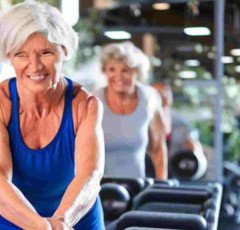





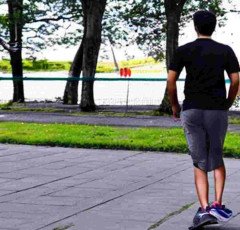


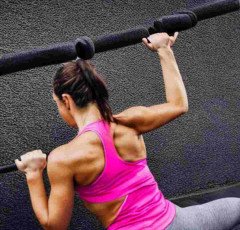

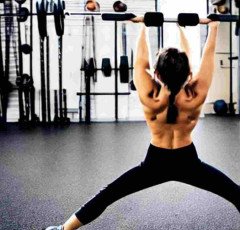











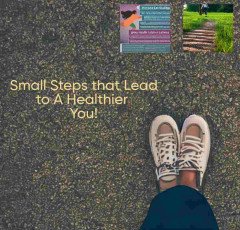












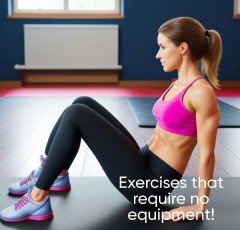

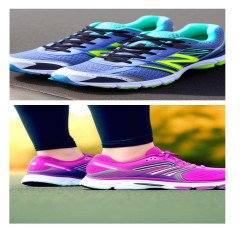






































 Best Phone
Best Phone  BEST SELLER TOP10
BEST SELLER TOP10  4k Projector For Home
4k Projector For Home  Air Purifier for Home
Air Purifier for Home  1150+Trendy kids coloring pages Bundle
1150+Trendy kids coloring pages Bundle  Women Fashion
Women Fashion  Unlimited access to classes on illustration, photography, design, film, music
Unlimited access to classes on illustration, photography, design, film, music  Digital Voice Recorder
Digital Voice Recorder  TitTok Revolution
TitTok Revolution  Home Decor Items
Home Decor Items  ASPINAL LONDON
ASPINAL LONDON  Hot Bags For Pain Relief
Hot Bags For Pain Relief  Best Sellers On Amazon
Best Sellers On Amazon  Adidas Shoes
Adidas Shoes  Wireless Gaming Mouse
Wireless Gaming Mouse  Hello Theme
Hello Theme  Men Clothing
Men Clothing  NordPass
NordPass  iPhone cable
iPhone cable  ELECTRONIC ACCESSORIES
ELECTRONIC ACCESSORIES  Healthy Ingredients
Healthy Ingredients 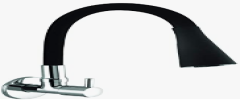 Kitchen Tap
Kitchen Tap  Wireless Bluetooth Earphones
Wireless Bluetooth Earphones  Smart Doorbell
Smart Doorbell  Dell Laptop
Dell Laptop  Creative Brief For Video Shoot
Creative Brief For Video Shoot  The Secret Email System
The Secret Email System  Dual USB Car Charger
Dual USB Car Charger  Favorite Company (Cuelinks)
Favorite Company (Cuelinks)  Best Home Appliances
Best Home Appliances  Door Handle Collection
Door Handle Collection  Essentials for Gamers
Essentials for Gamers  SEO Checklist
SEO Checklist  Artificial Intelligence
Artificial Intelligence  Best Selling Books
Best Selling Books  Samsung Mobile
Samsung Mobile  Kitchen Daily Use
Kitchen Daily Use  Only For The United States
Only For The United States  NordLocker
NordLocker  SOFAS
SOFAS  HP Laptop
HP Laptop  Acer Laptop
Acer Laptop  Motion Sensor Light
Motion Sensor Light  Smart Watches
Smart Watches  Pet Care Products
Pet Care Products  Stylish Sneakers by Red Tape
Stylish Sneakers by Red Tape  Puma (Clothing & Accessories)
Puma (Clothing & Accessories)  RPM 3.0
RPM 3.0  Online Technology Classes
Online Technology Classes  Sennheiser
Sennheiser  Prime Video
Prime Video  Graphics & Design
Graphics & Design  All Wireless Products
All Wireless Products  Online Marketing
Online Marketing  Duke T Shirts
Duke T Shirts  Unreal Engine 5 For Beginners Learn The Basics Of Virtual Production
Unreal Engine 5 For Beginners Learn The Basics Of Virtual Production  Apple iPhone
Apple iPhone  Crocs
Crocs  Best Robotic Vacuum Cleaners
Best Robotic Vacuum Cleaners  NordVPN
NordVPN  One World Collection
One World Collection  Echo Dot - Smart speaker with Alexa
Echo Dot - Smart speaker with Alexa 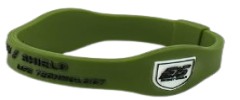 Wristbands
Wristbands  Hanging Lights For Living Room
Hanging Lights For Living Room  Amazon Best Selling Products
Amazon Best Selling Products  LCD Writing Tablet
LCD Writing Tablet  ASUS Laptop
ASUS Laptop  Rakhi
Rakhi  Wall Lamp
Wall Lamp  The Click Engine
The Click Engine  Top Rated From Amazon
Top Rated From Amazon  Realme Smart Phone
Realme Smart Phone  Bathroom Mirrors
Bathroom Mirrors 


















